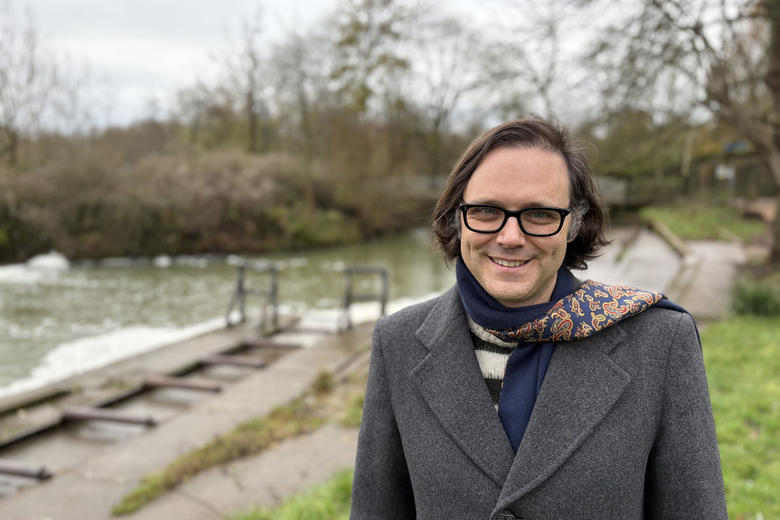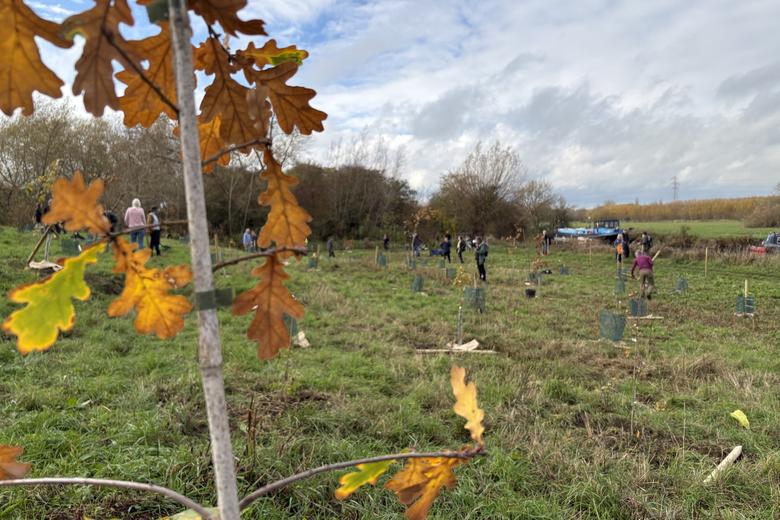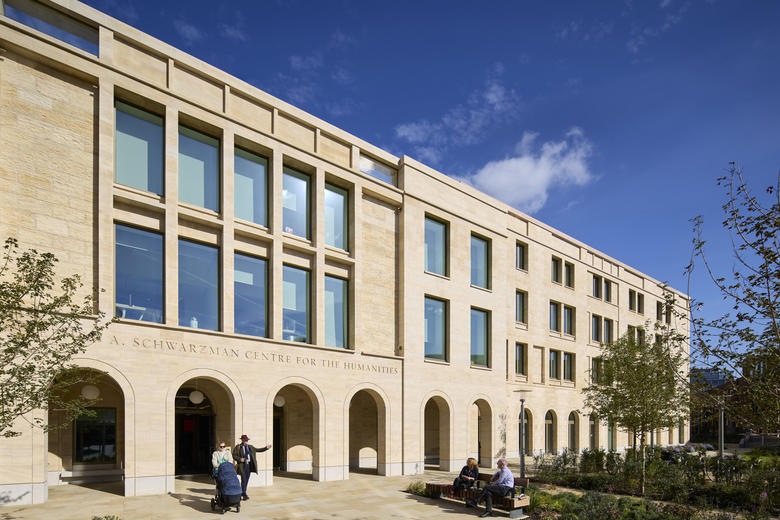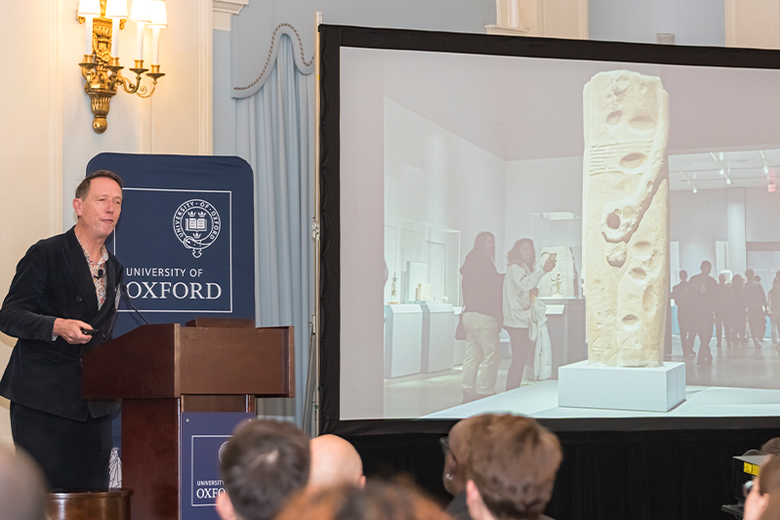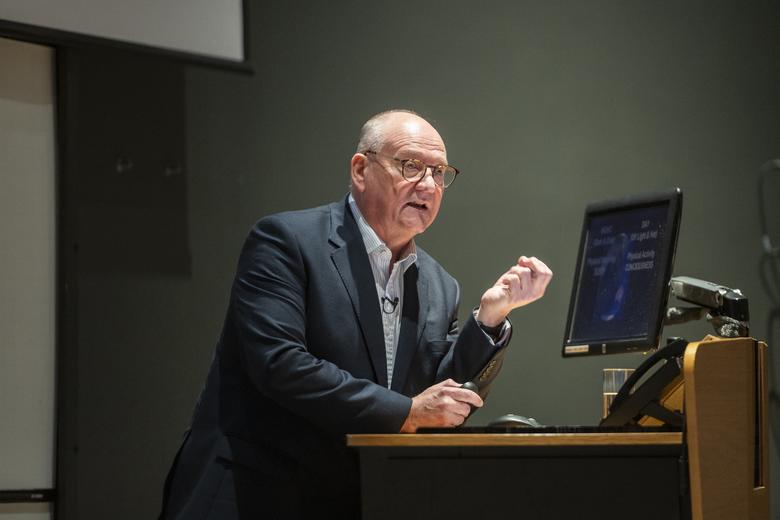OXFORD’S ‘GREEN ESTATE’ LAUNCHED

OXFORD’S ‘GREEN ESTATE’ LAUNCHED
The University has launched a Green Estate initiative three years in the making
Published: 21 May 2025
Author: Richard Lofthouse
Share this article

Oxford has drawn together some of its core land assets within Oxfordshire, creating a ‘green estate’. The idea is to manage the land more effectively, to make it more accessible both to members of the University and the public, and to position it at the centre of research, education, outreach and wellbeing agendas.
Dr Nick Leimu-Brown (right), Principal of Linacre College and until recently Chair of the Buildings and Estates Subcommittee responsible for the initiative, says that the core idea arose in 2022 from the broader environmental sustainability strategy for the University.
Launched in March 2021, the strategy sets two ambitious targets: to achieve net zero carbon and to achieve biodiversity net gain, both by 2035. One more immediate outcome was to force the University to view all its activities through a new lens.
‘We’ve had different bits of estate for aeons – from the University Parks to Wytham Woods to the Botanic Gardens, Harcourt Arboretum, some farmland that most people will be less familiar with. They were typically managed very competently, but without a great deal of coordination,’ says Leimu-Brown.
A classic example of inefficiency he cites might have been where none of these individual assets could afford a particular, ‘decent-sized piece of farm machinery’ ‘such as a wood chipper or small tractor’, but that collectively they could have done so and then shared the asset, ensuring value for money and efficient use.
‘If you cast back, we could have done more with less. We also wanted to coordinate a proper biodiversity policy. The problem wasn’t that we didn’t have one. The problem was that we had seven.’
Turning to the core University functions of research and education, Leimu-Brown says that the University wanted to extend the example of Wytham Woods to other less familiar pieces of University estate.
‘Wytham Woods is one of the most intensively researched tracts of lowland wood in the world, one of its celebrated data sets covering every generation of blue tit since World War Two.’
At the centre of the Green Estate are four sites: Park Farm, Wytham Woods, Northfield Farm and Court Place Gardens Woodland, but the total comprises 23 land parcels comprising over 1362 hectares (3950 acres). The breakdown of land use is approximately 26% arable, 36% permanent grassland and 35% woodland.
Park Farm encompasses a dazzling chunk of water meadows and riparian pasture separating the city centre from Marston – truly one of the most remarkable recent ‘secrets’ of the University to be divulged and promoted, a farm property that has come into direct University management having once been tenanted.
Another jewel is Court Place Gardens woodland, near the ring road to the northern side of the city and much regarded by the public who enjoy it; then there is Northfield Farm, aka ‘the University Farm,’ still under a commercial tenancy but in a mixed use that now includes research and environmental criteria, adjacent to the River Thames, not far from Wytham village.
‘The broader context here is terribly important,’ says Leimu-Brown, whose own area of academic expertise is land restoration and tropical forest.
‘The University used to have an agriculture department and a forestry department, both were perceived to be a bit embarrassing about 20 years ago, as ‘muddy boots’ research rather than high-brow stuff. Both were quietly absorbed into the Department of Biology, but thankfully neither were killed off completely.
‘The world now faces an existential crisis from nature collapse and climate change, so how the world feeds itself, how we maintain nature, this is exactly what we should be doing. They have risen to the very top of the agenda.’
It’s not the same as restoring the ploughing match once held between Oxford and Cambridge at Northfield Farm (they did!), or that Wytham Woods used to operate a commercial saw mill (possibly to be restored?). It’s also that research into crops, plants and trees now has international relevance.
‘That’s really now one of the principal purposes of the Oxford Green Estate.’
It is also and not coincidentally one of the big strategic goals of the recently established Ellison Institute of Technology, to lead research to solve global, sustainable food production.
The Green Estate initiative also sits within a matrix of other landmark developments such as the University’s lead role developing the Leverhulme Centre for Nature Recovery.
The second big role of the Green Estate after research will be around the education of existing students, staff and stakeholders, and alumni if they would like to be involved.
‘We’ve witnessed a collapse in outdoor education of school-age students,’ says Leimu-Brown. It has come about through curricular pressures, funding pressures, a lack of safe sites, confusion over risk and a lack of knowledge and skills among teachers.’
‘Oxford can plug that gap, concerning its own students. They are future leaders of many organisations, and future policy makers. It is terribly important that they have some link to nature.’
Leimu-Brown lived in a tent in Borneo for over two years researching dipterocarp regeneration, a huge group of flowering trees found only in the tropics.
‘I once attended a scout meeting as a guest instructor. I got them to harvest rain water from a car park puddle, then we filtered it and drank it. The scout master was appalled. But that’s what I mean by education and connection. There’s a fair bet those scouts remember that; they understood that night that rain water is water. It’s not just what comes out of a tap.’
The third huge area of promise for the Green Estate, which overlaps education, is outreach, he says; the fourth wellbeing. Outreach includes making Oxford’s land assets more accessible to the broader public, including local schools and policy creators locally and nationally.
Wellbeing is a universal need desired by human beings, but within Oxford the Green Estate has a particular role to play. A Trustee of the Oxford Preservation Trust, Nick notes in passing that the half-timbered buildings in Oxford’s High Street attest the land management and forest of the surrounding county, so that it is wrong to make an arbitrary distinction between built and natural environments, or to try and venerate an unchanging past that never existed.
‘In both cases there has been constant change, constant management. The Green Estate also needs to be managed, it can’t just be left to become a tangled mess.’
Leimu-Brown alludes to the fact that in broader discussions there is a contradictory impulse observable in society, where we value trees for example but can’t imaging cutting anything down, not realising that correct management of a forest will certainly require some thinning of trees over time, or population control of certain creatures that cause damage.
Similar contradictions are displayed in discussions over preserving and updating old buildings, he notes.
Leimu-Brown cites the recent book authored by the Principal of St Edmund Hall, Kathy Willis, Good Nature: The New Science of How Nature Improves Our Health. Baroness Willis is also a Professor of Biodiversity at Oxford, and in the book she successfully explained to a general audience the great strides science has made to explain and ‘prove’ why and how something simple such as taking a walk in nature benefits physical and mental wellbeing.
Over time, Leimu-Brown reflects, the larger question the University has to answer is to what extent it can, or should, play at farming. The hybrid solution will probably lie in limited direct land management plus tenancies that are awarded within a progressive framework, perhaps even bringing food production and tree cover together in climate resilient agro-forestry solutions, ‘a mixed model where food comes out of it, but not at the expense of everything else.’
Lead image: Grassland management and food production, Wytham (credit: Elizabeth Lettman); portrait of Dr Nick Leimu Brown, (credit University of Oxford/John Cairns).


